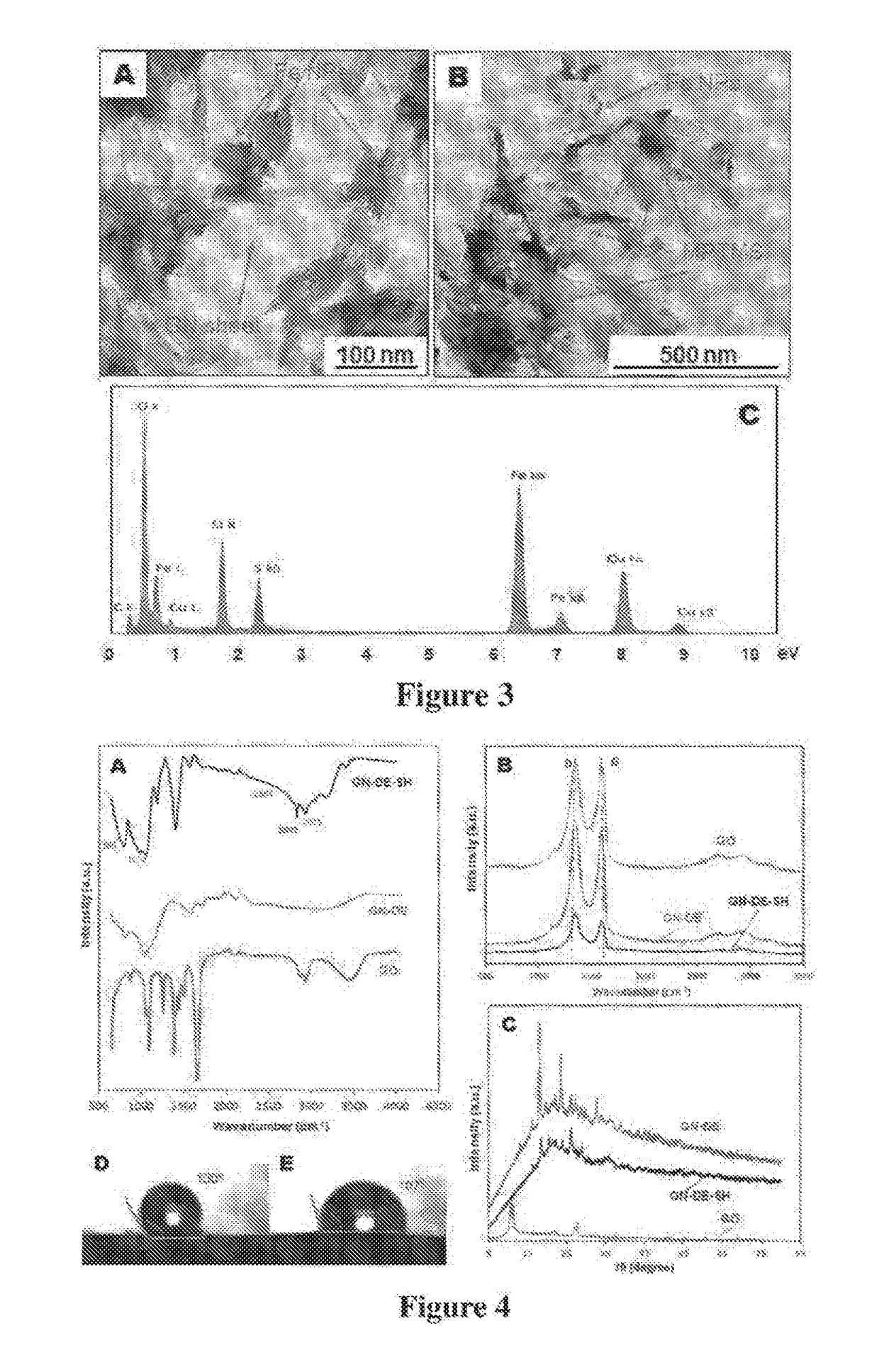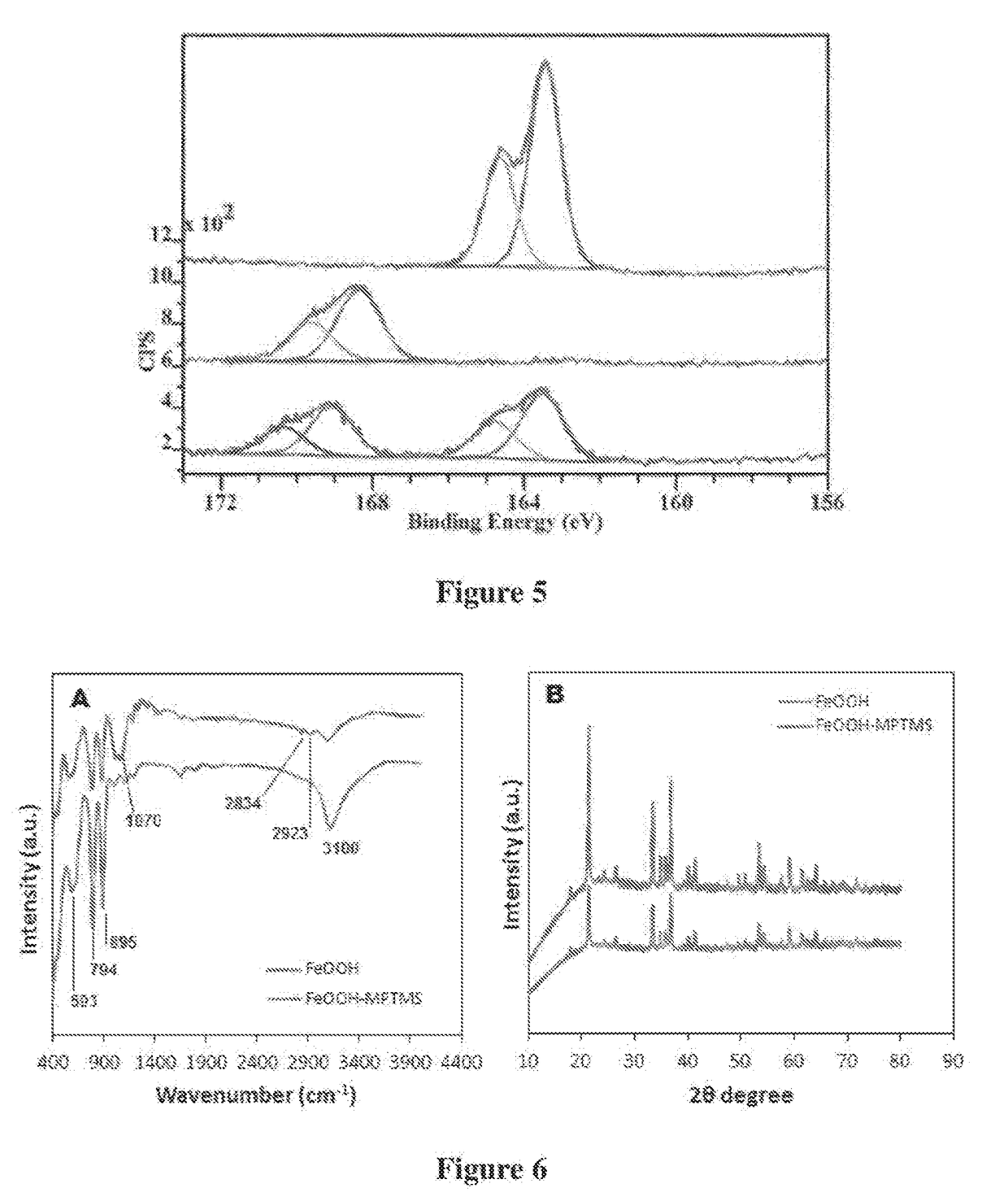Composite graphene-based material
a graphene-based material and composite material technology, applied in the field of composite materials, can solve the problems of difficult to reduce the concentration of target ionic species to very low levels, long interaction time and high cost materials, and contaminated industrial waste water and mine drainage, etc., to achieve high surface area, high surface area, and robust physical properties
- Summary
- Abstract
- Description
- Claims
- Application Information
AI Technical Summary
Benefits of technology
Problems solved by technology
Method used
Image
Examples
example 1
Preparation of Precursors Required for Preparation Graphene Composites
example 1a
[0209]A graphene oxide (GO) was prepared by exfoliation of row graphite ore or concentrated graphite using modified Hummers method. A mixture of concentrated H2SO4 / H3PO4 (360:40 mL) was added to 3.0 g of graphite material and 18.0 g KMnO4 that was kept at 50° C. under continuous stirring for 12 h. The reaction was allowed to cool down to room temperature / before pouting onto ice with H2O2 (3 mL). The remaining solid material was then diluted in 200 ml of Milli-Q water and centrifuged at 4000 rpm for 2 h where the supernatant was removed. The solids were washed in succession with 200 mL of HCl (30%) and twice with ethanol (4000 rpm for 4 h), vacuum-dried overnight at room temperature to obtain a brown product of GO which was characterised SEM, TEM. Fourier transform infrared (FTIR), x-ray diffraction (XRD) and Raman spectroscopy. Typical structure of GO sheets is presented in FIG. 1a.
example 1b
Graphene (GN) Precursor
[0210]Reduced graphene oxide (rGO) or graphene (GN) was prepared by reduction of graphene oxide by non-aromatic amino acid L-aspartic aci (L-asp). Dispersions of GO (20 mL) at a concentration of 0.1 mg / mL were heated to 90° C. in tightly sealed glass vials with 2, 3, and 4 mM L-Asp for 6 h. Dispersions were sonicated for 30 min prior to experiments and continuously stirred throughout the reaction. Homogeneous, reduced GO (rGO) dispersions were obtained without aggregation. The pH of the dispersions were adjusted to approx. 9 with 28% ammonia solution (2 μL per mL of dispersion) to promote the colloidal stability of the GO sheets through electrostatic repulsion. The effect on the reduction level of GO was then monitored as a function as time and the extent of the deoxygenation of the GO sheets was characterized. Solid rGO was obtained by centrifugation at 14,500 rpm for 30 min, and then washed in successive with 5% ammonia solution, distilled water and ethanol....
PUM
| Property | Measurement | Unit |
|---|---|---|
| density | aaaaa | aaaaa |
| diameter | aaaaa | aaaaa |
| concentration | aaaaa | aaaaa |
Abstract
Description
Claims
Application Information
 Login to View More
Login to View More - R&D
- Intellectual Property
- Life Sciences
- Materials
- Tech Scout
- Unparalleled Data Quality
- Higher Quality Content
- 60% Fewer Hallucinations
Browse by: Latest US Patents, China's latest patents, Technical Efficacy Thesaurus, Application Domain, Technology Topic, Popular Technical Reports.
© 2025 PatSnap. All rights reserved.Legal|Privacy policy|Modern Slavery Act Transparency Statement|Sitemap|About US| Contact US: help@patsnap.com



